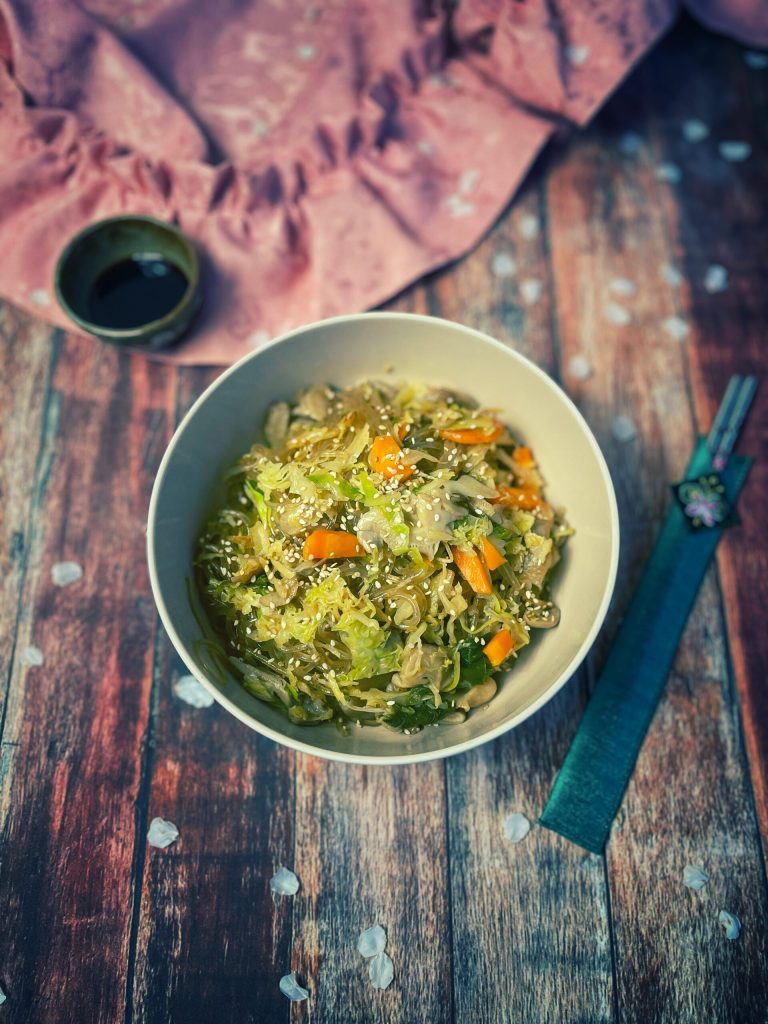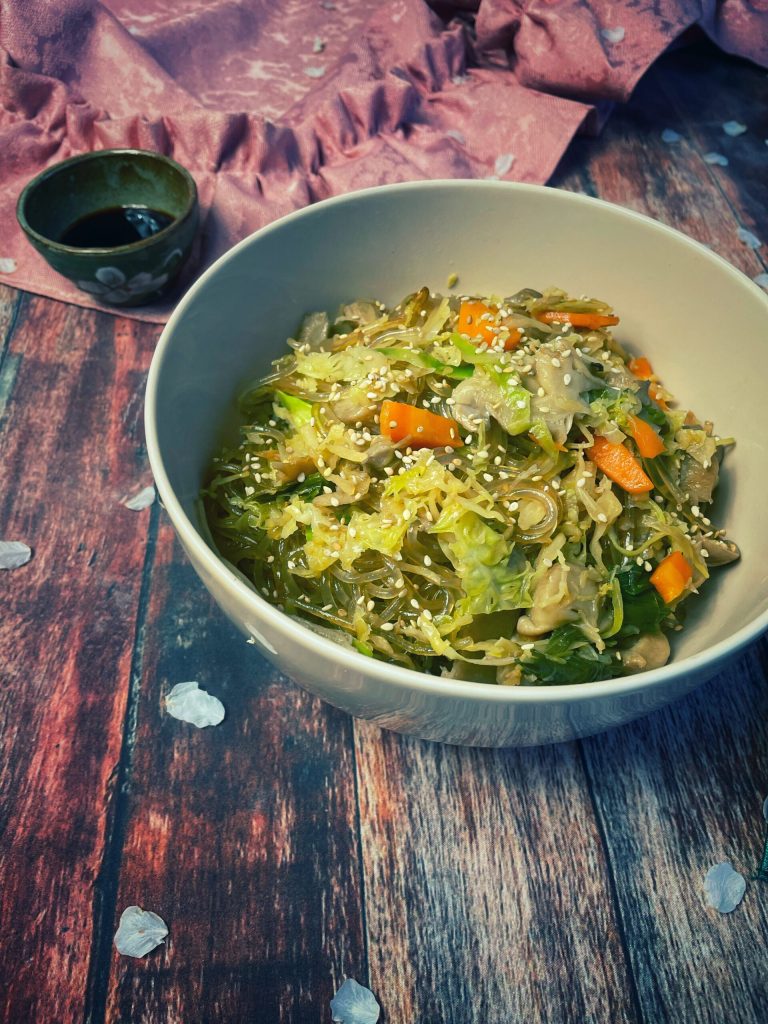A popular dish in Korean cuisine, Japchae consists of stir-fried noodles and vegetables.
The Sino-Korean word japchae consists of two syllables, jap meaning “mixed” and chae meaning “vegetables”.
Japchae is typically made with dangmyeon, a type of cellophane noodles made from sweet potato starch that are mixed with assorted vegetables, with or without meat, mushrooms (commonly Auricularia, shiitake, and Pleurotus mushrooms) and seasoned with soy sauce and sesame oil.
Japchae is currently one of the most popular traditional dishes for celebrations, often served on special occasions, such as weddings, birthdays (especially after the first birthday and hwangap, the sixtieth), and holidays.
It is also popular during banquets and parties due to its ease of preparation and because it can be served hot, at room temperature, or cold from the fridge and consumed freshly made or the day after.
It is commonly served as banchan (side dish), but it can also be eaten as a main dish. If served on a bed of rice, it is known as japchae-bap.
Beef and other meats, like pork marinated in soy, were added later.
Experimentation has led to many variations based on seafood, herbs, peppers, bean sprouts, and other ingredients.
My version is vegetarian with: carrots, mushrooms, cabbage, scallion, and sesame seeds.

- Difficulty: Very Easy
- Cost: Cheap
- Preparation time: 10 Minutes
- Portions: 2 people
- Cooking methods: Stove
- Cuisine: Korean
- Seasonality: All seasons
Ingredients
- 3.5 oz dangmyeon (or glass noodles)
- 1 carrot
- 1 scallion
- 1 clove garlic
- 2.8 oz mushrooms (shiitake or pleurotus or auricularia)
- 3.5 oz savoy cabbage (cut into strips)
- to taste salt and pepper
- 4 tbsp soy sauce
- 2 tbsp sugar
- to taste sesame oil
- to taste sesame seeds
Preparation
Boil the noodles for 3 minutes, drain, and cool them.
Slice the carrot and scallion.
In a wok, sauté the garlic and half of the scallion in sesame oil, add the mushrooms, carrot, cabbage, and season with salt and pepper.
Add the noodles.
Deglaze with soy sauce and add the sugar.
Let it become flavorful, and finally add the other half of the scallion.
Garnish with sesame seeds and serve immediately or even cold.

Affiliate link #adv
You can buy sweet potato starch noodles online, but they are quite expensive. If you can’t find them in specialized ethnic stores, you can opt for the more classic rice or soy vermicelli.
What are cellophane noodles?
Cellophane noodles, or fensi (traditional Chinese: 粉絲; simplified Chinese: 粉丝; pinyin: fěnsī; literally “flour thread”), sometimes called glass noodles, are a type of transparent noodle made from starch (such as mung bean starch, potato starch, sweet potato starch, tapioca, or canna starch) and water.
Usually sold dry, they are soaked to reconstitute, then used in soups, stir-fried dishes, or spring rolls.
They are called “cellophane noodles” or “glass noodles” because of their cellophane- or glass-like transparency when cooked.
They should NOT be confused with rice vermicelli, which are made from rice and are white instead of transparent (after cooking in water).

